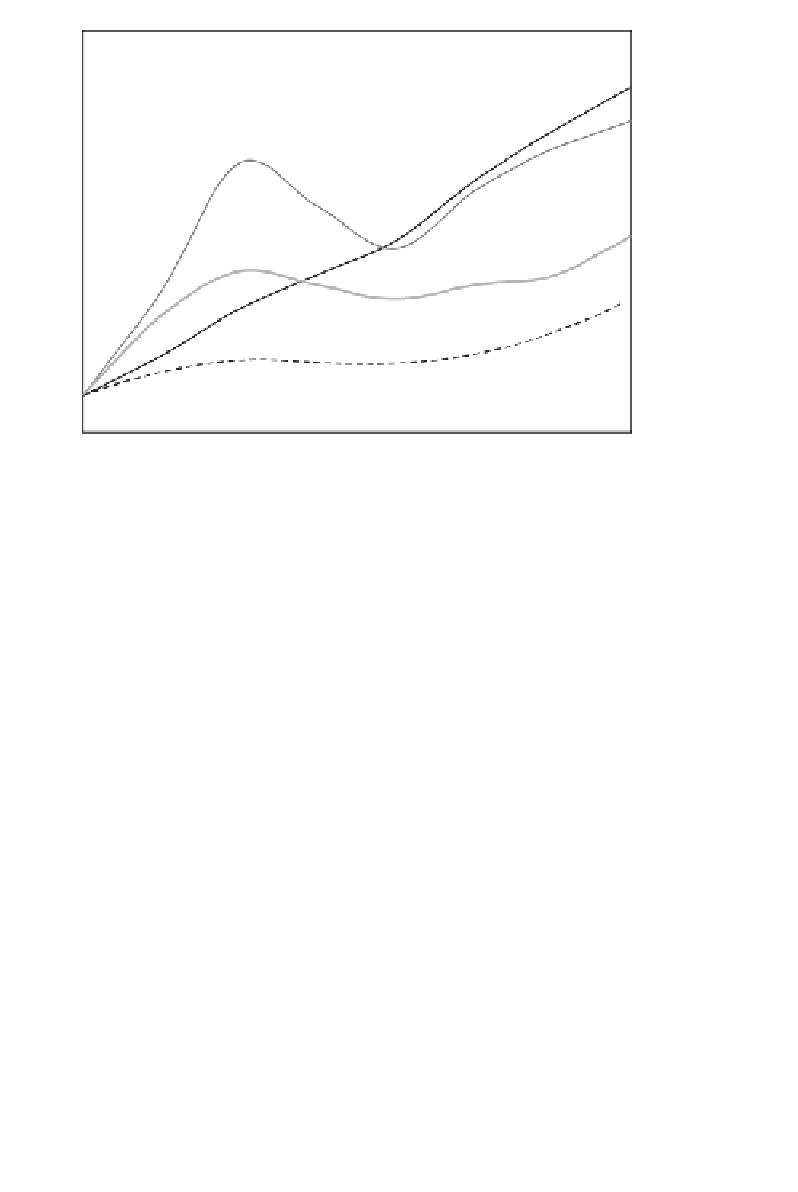Geography Reference
In-Depth Information
200
Software Industry
190
Firms
180
Turnover
170
160
150
Employees
140
All sectors
Firms
130
120
110
Turnover
100
Employees
90
1999
2000
2001
2002
2003
2004
2005
2006
Year
Sources:
Own calculations based on employment statistic
Bundesagentur für Arbeit
and turnover tax
statistic
Statistisches Bundesamt
(several volumes).
7
Figure 19
.
1
Development of the German software industry 1999-2006
Appendix Table 19A.1). These i rms generated a turnover of 24.1 billion euros in 2006.
Compared to the overall economy the software industry proved to be highly dynamic in
the years 1999 to 2006 with an impressive increase in i rms (+84.5) and turnover (+75.5)
(see Table 19A.1). Between 1999 and 2007 a total of 112,712 (+64.15 per cent) new
jobs were generated, with 23 per cent of these situated in Baden-Württemberg, which is
the leading location of the German software industry. In this region 16 per cent of the
German software i rms, 23 per cent of the turnover and 24 per cent of the employees
are concentrated. Baden-Württemberg has the highest number of employees and i rms
in the software industry in absolute terms. Global players as SAP AG (Walldorf), SAS
(Heidelberg), IBM Global Services Germany (Stuttgart) or Hewlett-Packard (Böblingen)
have their location there. SAP is a world market leader in business application software
(BITKOM, 2007).
8
In recent years the OECD (2006, p. 68) stated that Germany is
already a 'leading exporter of software goods'. The international signii cance of its cus-
tomized business software is surprising, because - in contrast to the USA - there are no
large hardware producers in Germany able to function as carriers for the software.
The concept of path plasticity may be able to provide explanations connected with
the co-evolution of institutions, competencies and demand. The chapter argues that the
plasticity of institutions and institutional coni gurations
has left actors room for strategic
choice and therefore makes an important contribution to 'path plasticity'. The insti-
tutional plasticity of the dominant development path of the German national innova-
tion system and the ways German software i rms have strategically used the room for
manoeuvre to achieve their innovative developments is discussed in the following.






































